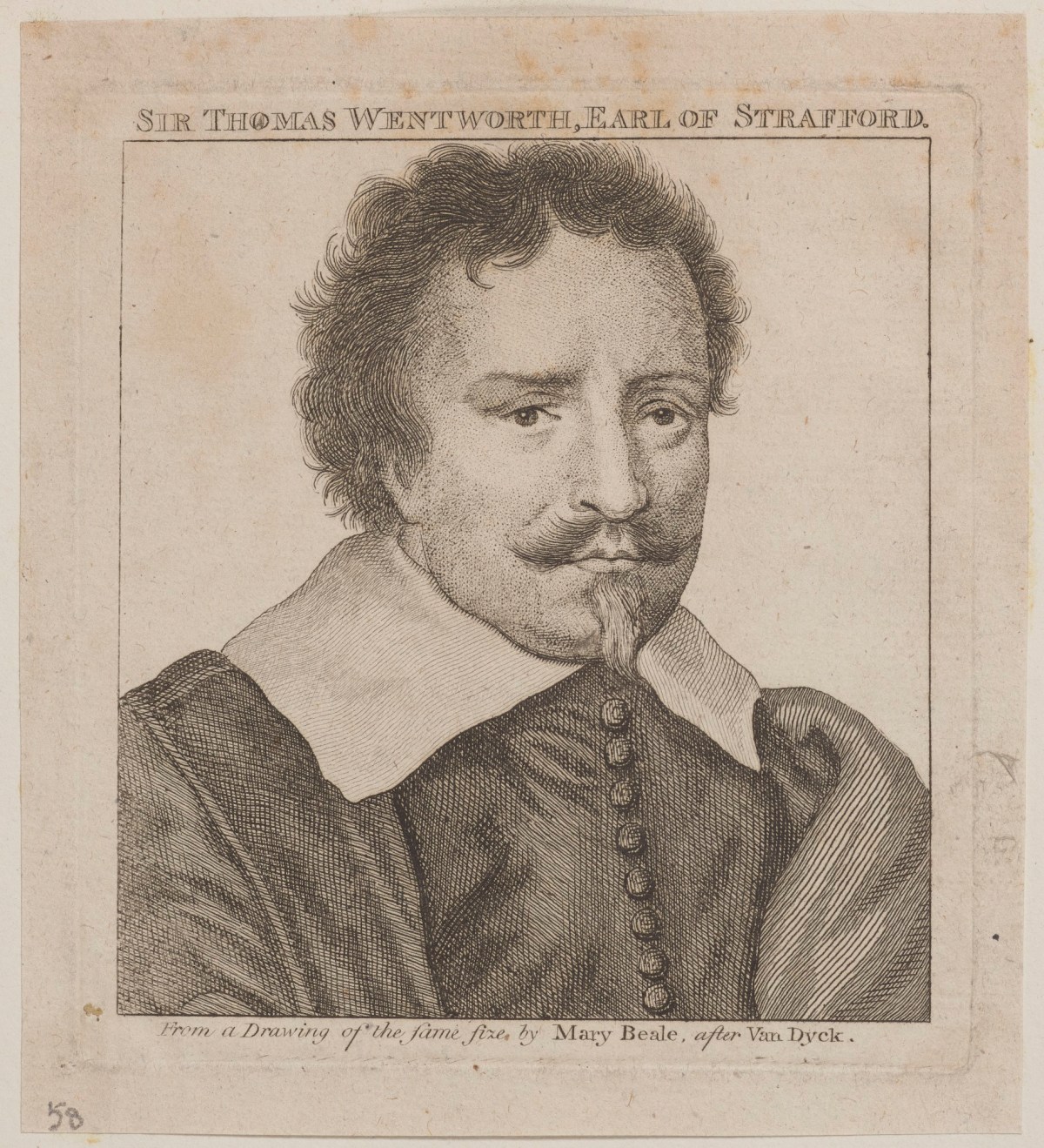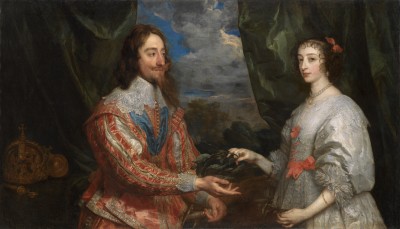
Anthony Van Dyck, Thomas Wentworth, first earl of Strafford.
109 mm x 100 mm. © Photo: Royal Academy of Arts, London.
This image is not available to download. To licence this image for commercial purposes, contact our Picture Library at picturelibrary@royalacademy.org.uk
Thomas Wentworth, first earl of Strafford
Anthony Van Dyck (1599 - 1641)
RA Collection: Art
This print is one of 180 plates which make up the 'British School I' album, presumably compiled in the early nineteenth century. This album is prefaced by a nine-page text entitled ‘Notes relating to the early history of British Art; to assist in forming a collection of illustrative engravings’. The album is in some sense a visual history of Britain since the Roman era, also including lists of prominent British artists and engravers (many of whom are not represented within the album) and another list of sources to consult.
The compiler of the album takes the view that:
'the interest of a collection of engravings illustrative of the British School can only be said to begin with works dating from the early part of the eighteenth century [where this album concludes, with the late works of Kneller]. Before that period, except in a very few instances, the specimens may interest the historian or the antiquary rather than the artist. To those earlier specimens the present first volume of the British School is nevertheless devoted… '
This statement (and the broad focus on British art from Roman times to the seventeenth century in the prefatory text) leads one to suppose that the album will contain mostly of antiquarian prints, and indeed there are numerous of historical prints by engravers such as James Basire and George Vertue. However, only the first 25 or so plates in the album depict subjects predating the practice of engraving in Britain (the compiler makes reference to Thomas Gemini’s copies of anatomical engravings in Vesalius’ De Humani Corporis Fabrica, eight of which are included in the album, as, in Ames’ opinion, ‘the earliest line engravings executed in England’). Thereafter the prints alternate between those published retrospectively for ‘the historian or the antiquary’ and those of seventeenth century printmakers such as Passe, Hollar and Faithorne depicting contemporary subjects. The second half of the album, in fact, consists almost entirely of portraits after three artists: Peter Lely, Willem Wissing, and Godfrey Kneller.
The striking prominence of these three artists within the album is one instance of the compiler’s firm views about which artists and engravers constitute the British School. While Lely and Kneller were considered admissible, ‘foreigners who, however much employed in Britain were equally celebrated on the Continent cannot be included in such a list. With such must be ranked Mabuse, Jansens, and others of greater note for example Holbein, Rubens and Vandyck’. Equally ‘Voerst and Vorsterman cannot be included in the English school of Engravers, but Wenceslaus Hollar … though a native of Prague worked so long in England that he may perhaps be so classed’. A borderline case is that of the large engravings after paintings executed in the time of Henry VIII: ‘The representation of the Field of the Cloth of Gold and other paintings illustrative of the events of this [Henry VIII’s] reign (at Windsor and elsewhere) were probably by foreigners, but as some doubt exists on this point…the prints from that painting and others of the kind are included in this folio’.
The album contains British images from Matthew Paris (c.1200-59) to Lionel Cranfield Sackville, first duke of Dorset (1688-1765) and in this respect it corresponds with the prefatory text, but as in the case of album II the ‘British School’ is partial, partly because of the exclusion of artists such as Holbein and more importantly because of the near-exclusive focus on portraiture. The main exceptions to this rule are Thomas Gemini’s anatomical plates and the series of large historical plates by James Basire after wall-paintings at Windsor and Cowdray, published by the Society of Antiquaries.
There is no indication as to the provenance of any of the prints in the album, with the exception of the title-page to Gemini’s Compendiosa totius anatomie delineatio, inscribed below ‘presented by C.L.E. [Charles Lock Eastlake] Lib.
Another album presumably assembled by the same compiler, labelled 'British School II', is also in the RA collection.
Object details
109 mm x 100 mm
Start exploring the RA Collection
- Explore art works, paint-smeared palettes, scribbled letters and more...
- Artists and architects have run the RA for 250 years.
Our Collection is a record of them.



